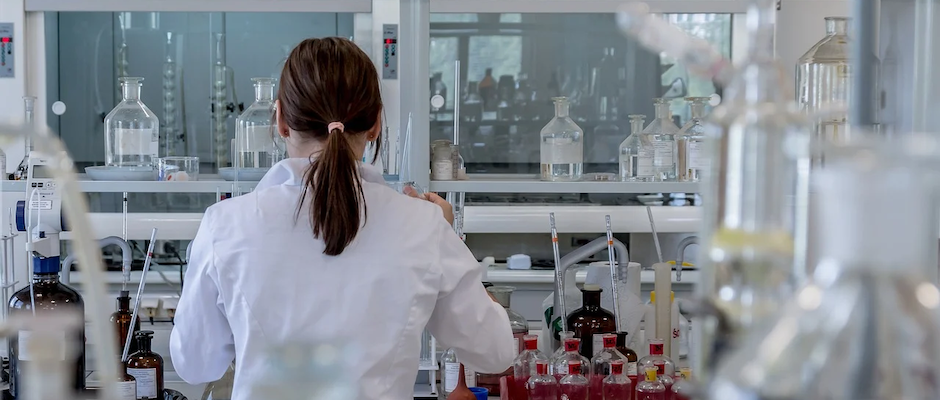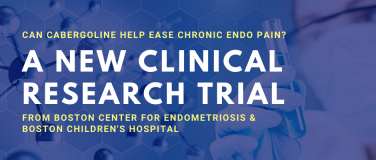
Over the last decade, campaigners, healthcare foundations, and charity groups have worked tirelessly to give endometriosis patients a platform to talk about what it’s like to live with the condition. In 2021 it still takes an average of 7.5 years to receive a diagnosis, and for many people, a diagnosis is only the beginning of a journey of managing associated symptoms, such as chronic pain.
While there still isn’t a cure, researchers are working tirelessly towards a more effective treatment for endometriosis. Dr. Dan Martin, the Scientific and Medical Director at the Endometriosis Foundation of America, outlines that innovations into care for endometriosis patients have moved at a rapid pace over the last few years, and if you live with the condition you may have already benefited from them.
There’s been a massive increase in research on endometriosis
“If you look at what’s been published in PubMed [a medical research database], the number of papers that have been published in relation to endometriosis has increased significantly,” Dr. Martin says. “In the past year, there have been almost 2,000 articles published in PubMed about half of which are on treatment and half of which are on diagnosis. That’s about 5.3 a day. If you compare that to the previous four years, it was about 3.4 a day. So that’s almost a 50% increase in the number of papers being published.”
The goal of medical research is to improve the lives and experiences of patients living with conditions, from diagnosis to treatment. A study published in 2020 on PLOS Genetics sought to identify some of the causes of endometriosis. They found that of the people they spoke to who had been diagnosed with endometriosis, they had a modification to their DNA that other people didn’t. By identifying slight DNA changes, the researchers highlighted that this could present a new, less invasive way for doctors to test for and diagnose endometriosis in the future that wouldn’t involve surgery.
Similarly, another study published in 2020 sought to draw links between endometriosis and external factors. Published on In Tech Open, scientists made preliminary investigations into how toxins like bisphenol A, phthalate esters, and polychlorinated biphenyls could be linked to endometriosis.
Endometriosis research has hit the headlines over the last year
Many endometriosis patients can attest that seeking out consultations from endometriosis specialists in order to be diagnosed with the condition can be lengthy, tiring, and expensive. Any innovations in care that will make diagnosis easier or care more accessible would have a very real impact on so many people’s lives.
Researchers at the University of Edinburgh hit the headlines in March 2021 when they reported the initial findings of their study into non-hormonal treatment for the chronic pain that’s so often associated with endometriosis. Scientists at the university are studying how dichloroacetate, a drug that’s more commonly used to treat rare metabolic conditions in children, could be used to treat pain.
The University of Edinburgh isn’t the only institution making strides in identifying new pain management. A research team at the University of Oxford, led by Dr. Krina Zondervan, professor of reproductive and genomic epidemiology, and working in conjunction with Baylor College of Medicine and Bayer AG, are also producing really exciting work that could change how doctors treat the pain associated with endometriosis.
As part of their work, they’ve analysed tissue samples donated by 60,000 patients and also looked into the genetic links between endometriosis and other inflammatory conditions like asthma and osteoarthritis. Their goal is for endometriosis patients to have more pain management options in the future.
Research will also change how endometriosis is diagnosed
As studies will hopefully impact how endometriosis is treated, Dr. Martin also highlights that it’s changing how the condition will be diagnosed. “As there’s been an increase in research published it corresponds with an increase in protocols that are being suggested. We’ve gone from trying to work out how to collect menstrual blood in caps to a new study at Harvard,” Dr. Martin explains.
At present, endometriosis can only be 100% confirmed via laparoscopy. This is a surgical procedure, done under general anaesthesia, where your surgeon will look for signs of endometrial tissue outside of the uterus. That tissue then has to be sent to pathology in order for endometriosis to be entirely confirmed. It’s invasive and isn’t an option presented to everyone (many doctors may just perform a pelvic exam, ultrasound, or MRI scan, which can lead to them missing your endometriosis). However, a research team at Harvard University, working with a startup NextGen Jane, are looking to change that.
They want to improve the care that endometriosis patients currently receive by deducing if the menstrual blood squeezed from tampons could be used to identify and diagnose early signs of endometriosis and similar intimate conditions.
If their research proves fruitful, this milestone could present a critical improvement on the present physical and emotional pain that many patients go through before being diagnosed. Dr. Martin highlights that, unlike many other diseases, the side effects associated with endometriosis are generally most severe when you’re younger and lessen as you transition into menopause.
In research going forward, Dr. Martin says, “we almost have to talk about dysmenorrhea and pain as much as we talk about endometriosis because the treatments for dysmenorrhea and pain are the same as endometriosis. So even if you get the wrong diagnosis you’ll get the right treatment sooner.”
The normalization of pain is a barrier to research and diagnosis
Reading statistics such as it taking 7.5 years to get an endometriosis diagnosis can be incredibly frustrating and difficult to understand. However, Dr. Martin outlines that there are two key roadblocks that contribute to the lack of endometriosis research and diagnosis.
“There are roadblocks to all research but endometriosis has much less funding than cancer and diabetes and other conditions that are much more obvious to the public,” Dr. Martin says.
Similarly, he notes that when pain is normalized at home and in a medical setting, it can prevent a patient from getting the care that they need at the earliest point of need. “I think one of the problems we have is that recognition is delayed. It’s delayed for lots of reasons. However, when we look at the misinformation that patients get when their pain is normalized, we can see that this is when this normalization is internalized.” says Dr. Martin.
“Their friends will normalize their pain, their parents will, and worst of all their doctors will. And while we can hold our doctors to a higher standard, they’re only one part of the problem. Until society deals with the adverse effects of the normalization of pain then it doesn’t make sense to pick on one group and not the entire population.”
Most people who experience cramps on a monthly basis won’t need to seek out the attention of a medical professional. However, because these cramps and pains are minimized it can prevent people who experience chronic pain and dysmenorrhea from getting the attention they need.
“By the time that someone has cramps bad enough to see a doctor we can pretty much guess that at least 10% of those have endometriosis. If you look at patients who have cramps bad enough to be referred to a tertiary care center for pain, then 20% of those who have dysmenorrhea have endometriosis,” says Dr. Martin. “If they don’t respond to birth control pills or anti-inflammatory medication, then 80% have endometriosis.”
While the continued normalization of pain can prevent endometriosis patients from getting the pain management and care that they need, the amount of research into the condition has increased exponentially over the last decade and as results of studies roll in, it may change how health professionals treat endometriosis in the future.









